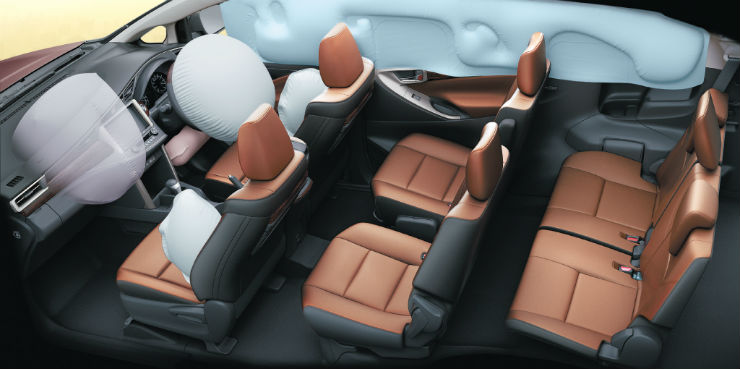Nitin Gadkari, the Minister of Road Transport and Highways urged the automobile manufacturers to upgrade the safety in all the vehicles. After meeting with the representatives of the Society of Indian Automobile Manufacturers (SIAM), Gadkari posted on Twitter urging the automobile manufacturers to provide a minimum of six airbags.
In the interest of passenger safety, I have also appealed all Private Vehicle Manufacturers to compulsorily provide a minimum of 6 Airbags across all variants and segments of the vehicle. pic.twitter.com/0clrCyHvid
— Nitin Gadkari (@nitin_gadkari) August 3, 2021
Gadkari appealed in the tweet, “In the interest of passenger safety, I have appealed all private vehicle manufacturers to compulsorily provide a minimum of 6 airbags across all variants and segments of the vehicle.”
The government of India has already made at least one airbag mandatory in cars and the rule is already in effect. From December 31st, 2021, dual front airbags in all cars and SUVs sold in India will become mandatory. While Gadkari has made the statement and has urged the automobile manufacturers, one should note that there is no plan to make six airbags mandatory in all cars and SUVs in the near future.

Even the mandatory driver airbag rule came into effect from 1st July 2019 for new vehicles. For the existing vehicles, the deadline is August 31st. So it did take a good amount of time for the manufacturers to comply with the new regulations.
With almost all the cars now available with at least driver-side airbags, the government will introduce the mandatory dual front airbag rule later this year. While airbags do make cars safer, a vehicle should be structurally strong to survive an accident and for the airbags to be of any use.
Can more airbags become a reality?
While there are similar rules in developed countries that ensure that occupant safety is primary over the cost of the vehicle. However, India is still a developing country where the majority of car buyers are on a tight budget. Airbags are quite costly and putting more of them will increase the price of the vehicle substantially.
If the vehicle is not originally designed to offer dual airbags or side airbags, a lot of restructuring has to be done to the vehicle to ensure that there is space for the airbag module and when it deploys, it does that properly.
While the top-end variants of the mid to high-end models have already started offering the six airbags, it is not so simple for the entry-level models that are not originally designed to offer so many airbags.
There are no incentives for the customers in India to buy a safer car. In many developed nations, the insurance amount is liked with the extra safety equipment that a vehicle provides. So all the vehicles are treated equally regardless of the safety features and equipment list.
Is there a better way?
Making vehicles structurally stronger can be one of the ways to ensure safety without putting much of an impact on the cost of the vehicle. Making the structure of the vehicle stronger so that it absorbs the impact from an accident and keeps the occupants safe is currently the need of the hour. There are already a few cars that are made in a different way for the international markets while the Indian-spec models are much lower in safety even though they meet the government regulations.